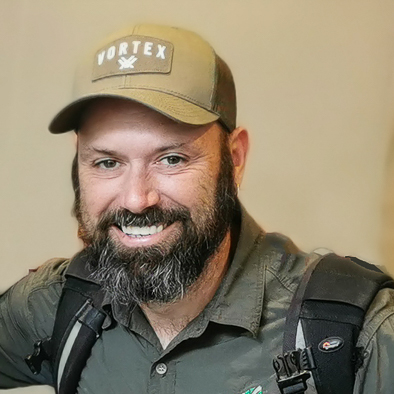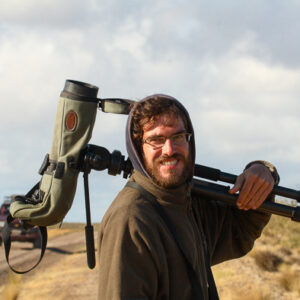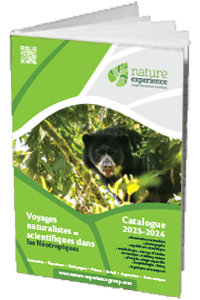Your travel expert
Xavier Amigo
Responsible for naturalist, botanical and ornithological travel. Responsible of fixing and professional contact.

Considered one of the ultimate birdwatching destinations in Colombia, Inírida is strategically located at the confluence of three of the world's richest biodiversity regions: the Orinoco region, the Amazon, and the Guiana Shield. This mosaic of ecosystems is key to understanding the immense avian diversity in Inírida, where white-sand forest specialists are the undisputed stars.
Inírida is one of the lesser-known regions in the Amazon basin. However, it has recently become one of the most in-demand destinations for birdwatchers thanks to its high concentration of rare and specialized species, incredible biodiversity, and geographic isolation. Located at the meeting point of some of Colombia’s largest rivers, the Guaviare and Meta rivers converge here, and the Inírida River flows into the Orinoco. Its floodplains, extensive savannahs, and white-sand forests are part of the landscapes of the Guiana Shield, to which this ecosystem belongs. This region has the particularity of sharing elements of the Orinoco, the Amazon, and the Guiana Shield. Therefore, it is home to incredible bird diversity. This is an adventure journey through Colombia’s most remote and well-preserved regions, where indigenous cultures, gastronomy, and the rarest birds share pride of place to create an exceptional birding experience.

We will meet with our guide at Bogotá airport for our flight to the Amazon. After a two-hour flight, we arrive in the city of Inírida and transfer immediately to our small city hotel, which will be our headquarters for the next six days. Then, we will head out for our forest taste of the Amazon at Yapacana Reserve near the city. This first birding outing will take us to Amazonian white-sand forests. These forests, so unique to the region, grow on very poor soil and are extremely fragile ecosystems. They are also home to many specialty species: we will look for antbirds, antwrens, and antshrikes, particularly the Yapacana Antbird, a stealthy bird with a very restricted range.
Overnight in a charming hotel in Inírida.
Target birds: Glittering-throated Emerald, Pompadour Cotinga, Spangled Cotinga, Black-spotted Bare-eye, Bare-necked Fruitcrow, Screaming Piha, Swallow-winged Puffbird, Spotted Puffbird, Black Manakin, Orange-winged Parrots, Scarlet Macaw, Red-and-Green Macaw, Least Nighthawk
Close to our hotel is the richest network of trails in the area. Preserved and managed by the Curipaco Indigenous community, Sabanitas is home to an impressive list of species and a mixture of all the region’s important habitats: grassy savannahs, white-sand forests, and riparian vegetation. But most observers come here drawn by the curious call of the rare and unpredictable Capuchinbird. This area has an isolated population of this surreal species, far from its typical range. A multitude of other rare and localized Amazonian species also occupy this ecosystem. The open areas are ideal for observing flycatchers and cotingas and the passage of large groups of macaws and parakeets. After this long birding day, we will return to our hotel in Inírida.
Target birds: Brown Jacamar, Gilded Barbet, Amazonian Trogon, Amazon Kingfisher, Yellow-crowned Manakin, White-crowned Manakin, Orinoco Piculet, Paradise Tanager, Black-faced Tanager, Burnished-buff Tanager, Giant Snipe, Sand-colored Nighthawk, Spotted Puffbird, Golden-headed Manakin, Black Manakin
A 90-minute motorboat ride will take us down to the impressive anthracite rock formations of the Cerros de Mavecure, three hills of striking beauty considered sacred by the Indigenous people living in the area. Depending on the group’s physical condition and the climate, we will walk around these ancient tepuis, which form part of the Guiana Shield. From a birding perspective, the most intriguing aspect of this area is the mixture of species from the Amazon basin and the Guiana Shield ecoregion. Mavecure is a point of convergence for these species. We’ll stop at several viewpoints along the river and return to our hotel in Inírida at the end of the day.
Target birds:
Today, we will cross the Inírida River by dugout canoe to the opposite bank and explore several trails. We’ll spend the morning walking these pleasant forest trails, searching for new species, and exploring large patches of varzea forests. We will focus on the Paujil Trail, where several rare species of birds and mammals can be found. We’ll return to Inírida at midday, avoiding the hottest part of the day, where we’ll have lunch and rest for a few hours. In the afternoon, we’ll visit the Inírida River, where we will scour the banks for kingfishers, antbirds, herons, spinetails, raptors, and many other species. We’ll return to Inírida at dusk, trying to spot some nocturnal species on the way.
Target birds: Rose-breasted Chat, Yellow-crowned Elaenia, Black-chinned Antbird, Blue-throated Piping Guan, Orinoco Piculet, Paradise Jacamar, Slate-colored Hawk, Duida Woodcreeper, Boat-billed Heron Band-tailed Nighthawks
This morning’s excursion will take us to the varzea and flooded primary forests of Matraca. Birding this network of trails will allow us to search for many especially beautiful species: jacamars, nunbirds, woodpeckers, and manakins. In 2017, a possible new species of antshrike, provisionally named Inírida Antshrike, was discovered in this primary forest area, pending genetic analysis and further study. Naturally, we will search for this mysterious and fascinating bird in these gallery forests. After a picnic lunch, we will explore the lower banks of the Inírida River to try to add to our lists of waterbirds until nightfall for our final owling session. Last night in Inírida.
Target birds: Hoatzin, Capped Heron, White-throated Toucan, Drab Water Tyrant, Amazonian Tyrannulet, Collared Plover, Pied Lapwing, Orinoco Softtail, Black Bushbird, Black-capped Donacobius, Green-tailed Jacamar, Inírida Antshrike, Black-fronted Nunbird, Gilded Barbet, Várzea Schiffornis, Cream-colored Woodpecker, Buff-breasted Sandpiper, Sand-colored Nighthawk
We will use our final few morning hours to explore the Yapacana area once again. This reserve takes its name from the Yapacana Antbird, which is only found around this reserve in Colombia and a few places in the north of Brazil. This will be our last birding session before our return flight to Bogota.
Possible Extensions: Choco - 5 days / 4 nights.
Targeted birds: Yapacana Antbird, Green-tailed Jacamar,
You want a personalized departure date? Contact us. Request a personalized date
| Dates | Status | |
|---|---|---|
| From Dec 08 to Dec 13, 2024 | Open to booking (4 places left) | |
| From Jan 26 to Jan 31, 2025 | Open to booking (8 places left) |
| 2 travelers | 4 travelers | 6 travelers |
|---|---|---|
| 2,250 US$ | 1,750 US$ | 1,500 US$ |
You are a group of travelers and want a special rate? Contact us. Request a personalized quote
Itineraries may be subject to last-minute changes due to natural disasters or changes in domestic legislation. The visitor must take into account and accept the possibility of last-minute changes in the organisation of the trip. The operator therefore reserves the right to make the necessary changes to ensure the safety and integrity of the travellers and to respect the laws in force. The hotels are given as an indication only and are subject to availability at the time of booking the tour. In case of unavailability, a hotel of the same category will be proposed.
* In US dollars based on double room accommodation. These rates are valid for the dates selected but may be subject to increase at the time of booking and depending on the tourist season and local holidays. Our quotations are calculated in US Dollars and we are committed to this amount. The equivalent value in Euros or in any other currency is therefore indicative and calculated on the basis of the exchange rate on the day of the offer.
** Airfares may vary depending on the airline and availability at the time of booking.








Travel theme |
Birdwatching and photography |
|---|---|
Accompaniment |
English-speaking specialist guide |
Group |
Maximum 8 participants |
Arrival city |
Bogota |
Departure city |
Bogota |
Accommodation |
Charming hotels |
Transport |
Private transport throughout the tour |
Physical condition |
Easy to Moderate |
Best season |
October to June |

